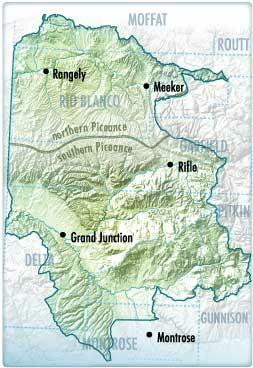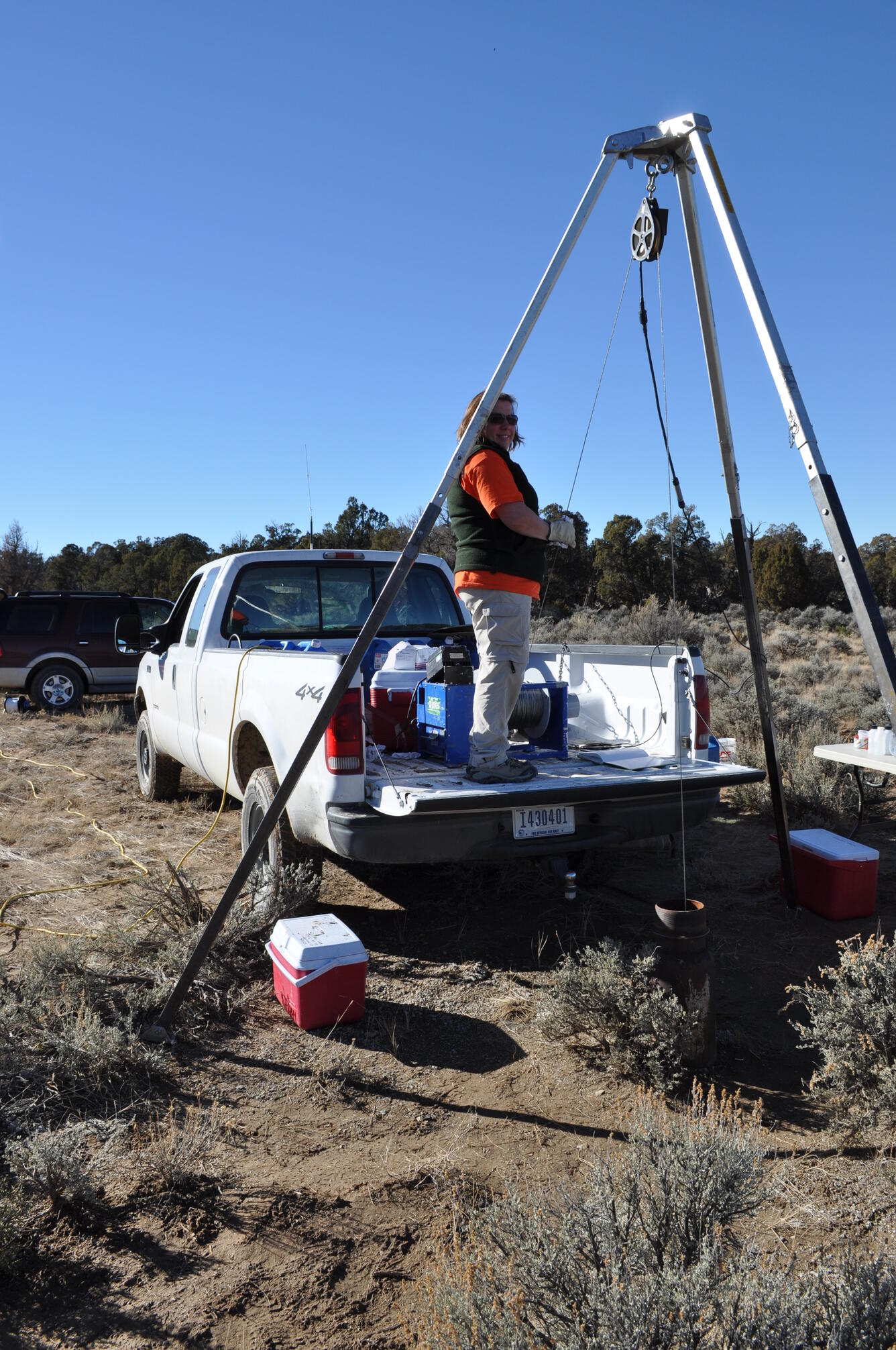As large-scale energy development continues in the Piceance Basin, there is potential for changes in surface-water and groundwater resources. In the southern Piceance Basin, a water task force consisting of numerous local governments, municipalities, and energy companies collectively identified the need for a common data repository. In the northern Piceance Basin, similar efforts were underway in approximately the same timeframe. The outcome of these efforts is the combined northern and southern Piceance Basins project, referred to collectively as "the Piceance Basin." Data collected for the Piceance Basin provide an invaluable contribution to the planning, monitoring, conservation, and management of water resources.

Approach
The U.S. Geological Survey (USGS), in cooperation with energy industry and local and State agency partners, is in the process of creating and maintaining a public, web-accessible common data repository. The repository will combine waterquality data from industry, local, State, Federal, and other sources. Data will be screened and merged from disparate locations and formatted into a single uniform format. The quality and completeness of the incoming data will be reviewed and documented. Using the repository, the USGS will evaluate all available water-quality data to develop a baseline assessment of the region’s water resources. Results of the baseline assessment will facilitate the development of regional monitoring strategies to fill identified data gaps and minimize redundancies in current and future water-resource monitoring

Below are other science projects associated with the Colorado Water-Quality Data Repository.
Upper Yampa Watershed Water-Quality Data
Eagle River Water-Quality Data
Upper Gunnison River Water-Quality Data
Southwest Study Area Water-Quality Data
Roaring Fork Watershed Water-Quality Data
Arkansas River Water-Quality Data
Blue River Water-Quality Data
Below are multimedia items associated with this project.
Below are publications associated with this project.
Methane in groundwater from a leaking gas well, Piceance Basin, Colorado, USA
Characterization of hydrology and water quality of Piceance Creek in the Alkali Flat area, Rio Blanco County, Colorado, March 2012
Groundwater ages and mixing in the Piceance Basin natural gas province, Colorado
Chemistry and age of groundwater in the Piceance structural basin, Rio Blanco county, Colorado, 2010-12
Characterization and data-gap analysis of surface-water quality data in the Piceance study area, western Colorado, 1959–2009
Overview of groundwater quality in the Piceance Basin, western Colorado, 1946--2009
Assessment of in-place oil shale resources of the Green River Formation, Piceance Basin, western Colorado
Nahcolite resources in the Green River Formation, Piceance Basin, northwestern Colorado
Intertonguing of the lower part of the Uinta Formation with the upper part of the Green River Formation in the Piceance Creek Basin during the late stages of Lake Uinta
The Yampa Bed — A regionally extensive tonstein in the Williams Fork Formation, northwestern Piceance Creek and southern Sand Wash Basins, Colorado
Piceance Creek Basin, Colorado, Oil Shale Geodatabase
Baseline characterization of water quality and mass loading in Piceance Creek, Rio Blanco County, Colorado, December 2000
Hydrology and geochemistry of a surface coal mine in northwestern Colorado
Below are partners associated with this project.
As large-scale energy development continues in the Piceance Basin, there is potential for changes in surface-water and groundwater resources. In the southern Piceance Basin, a water task force consisting of numerous local governments, municipalities, and energy companies collectively identified the need for a common data repository. In the northern Piceance Basin, similar efforts were underway in approximately the same timeframe. The outcome of these efforts is the combined northern and southern Piceance Basins project, referred to collectively as "the Piceance Basin." Data collected for the Piceance Basin provide an invaluable contribution to the planning, monitoring, conservation, and management of water resources.

Approach
The U.S. Geological Survey (USGS), in cooperation with energy industry and local and State agency partners, is in the process of creating and maintaining a public, web-accessible common data repository. The repository will combine waterquality data from industry, local, State, Federal, and other sources. Data will be screened and merged from disparate locations and formatted into a single uniform format. The quality and completeness of the incoming data will be reviewed and documented. Using the repository, the USGS will evaluate all available water-quality data to develop a baseline assessment of the region’s water resources. Results of the baseline assessment will facilitate the development of regional monitoring strategies to fill identified data gaps and minimize redundancies in current and future water-resource monitoring

Below are other science projects associated with the Colorado Water-Quality Data Repository.
Upper Yampa Watershed Water-Quality Data
Eagle River Water-Quality Data
Upper Gunnison River Water-Quality Data
Southwest Study Area Water-Quality Data
Roaring Fork Watershed Water-Quality Data
Arkansas River Water-Quality Data
Blue River Water-Quality Data
Below are multimedia items associated with this project.
Below are publications associated with this project.
Methane in groundwater from a leaking gas well, Piceance Basin, Colorado, USA
Characterization of hydrology and water quality of Piceance Creek in the Alkali Flat area, Rio Blanco County, Colorado, March 2012
Groundwater ages and mixing in the Piceance Basin natural gas province, Colorado
Chemistry and age of groundwater in the Piceance structural basin, Rio Blanco county, Colorado, 2010-12
Characterization and data-gap analysis of surface-water quality data in the Piceance study area, western Colorado, 1959–2009
Overview of groundwater quality in the Piceance Basin, western Colorado, 1946--2009
Assessment of in-place oil shale resources of the Green River Formation, Piceance Basin, western Colorado
Nahcolite resources in the Green River Formation, Piceance Basin, northwestern Colorado
Intertonguing of the lower part of the Uinta Formation with the upper part of the Green River Formation in the Piceance Creek Basin during the late stages of Lake Uinta
The Yampa Bed — A regionally extensive tonstein in the Williams Fork Formation, northwestern Piceance Creek and southern Sand Wash Basins, Colorado
Piceance Creek Basin, Colorado, Oil Shale Geodatabase
Baseline characterization of water quality and mass loading in Piceance Creek, Rio Blanco County, Colorado, December 2000
Hydrology and geochemistry of a surface coal mine in northwestern Colorado
Below are partners associated with this project.








